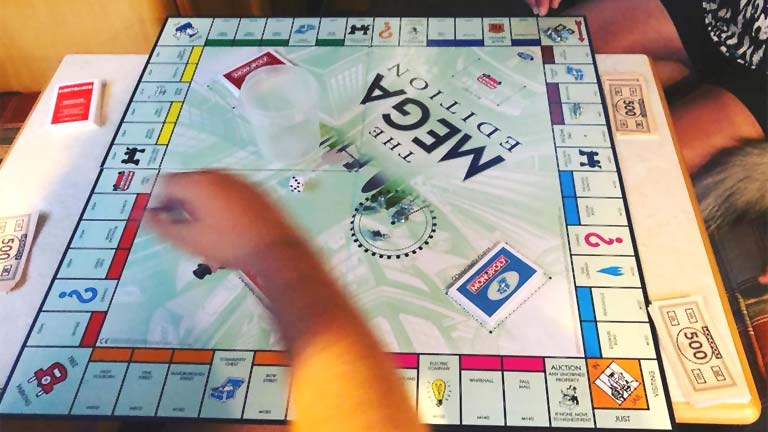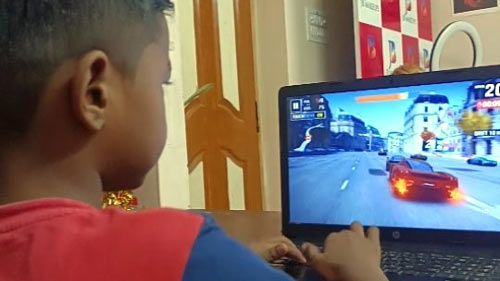
With many kids struggling financially, parents and educators need new ways to teach personal finance. Try these fun board games instead of lecturing kids about saving, investing, and money strategies.
Designed for 4th through 6th graders, Buy It Right teaches children the value of money by teaching them to set prices and make correct changes. It also reinforces math skills and comes with paper play bills, plastic coins, a calculator, and everything else needed to play the game.
The Game of Life
A classic, this game teaches kids the importance of working hard and the potential pitfalls of taking risks.
Kids ages eight and up learn the basics of saving and budgeting money with this fast-paced game. It also introduces them to bills, income, savings accounts, and the stock market.
The Sims (T for Teens, Ages 12+, Single or Multiplayer) is a hugely popular simulation series that teaches about small-scale financial management. It covers investing, purchasing property, and managing a work-life balance. The Sims also teaches about budgeting and the relative value of items.
Pay Day
The kids’ game Pay Day simulates a month-long budget cycle, teaching players the importance of saving and planning for expenses. The player with the most money (or least debt) at the end of a set number of in-game months wins.
The board is designed like a calendar, and players move their tokens by rolling the die and following the instructions on the space they land on. They collect or pay bills and expenses and can take out loans (in increments of $1,000).
A classic game that teaches kids to recognize currency and specific denominations while learning about savings: it’s always early enough to start a savings habit!
Monopoly
Whether they earn an allowance, are tasked with babysitting, or work part-time, children and teens need to learn the value of money. The best gifts for board game lovers like Monopoly can help them understand savings, spending wisely, and balancing the inflow and outflow of cash.
Even if they don’t have a Monopoly board, kids can get an early start on their financial literacy journey by collecting pennies in old jam jars or other containers. It’s a fun way to teach them that while one penny may not buy much, little bits of money add up quickly. They can also use apps that help them track their savings and expenses. These include Savings Spree, Renegade Buggies, and Bankaroo.
Order Up!
Kids and teens need to know where the money comes from to learn how to balance a budget, pay bills, and make intelligent savings choices. They need to understand how interest works, be able to set up an IRA and pension fund, and invest in the stock market.
It’s also essential for kids to learn about the difference between needs and wants and how to prioritize them. Whether they get a cash allowance or work for their bucks through babysitting mowing lawns, or other chores, financial literacy allows kids to make informed decisions about spending and saving money. Banzai offers various personal finance lessons, from narrative approaches to interactive games.
Money Bags
This money-smart board game is fun for kids to practice collecting, counting, and exchanging realistic-looking coins. The player who collects the most money wins.
While this may not be the most fun of games, it can help kids understand how to budget for future purchases by teaching them the importance of saving and making wise spending decisions. Some parents report that this game is also a great way to teach kids about making trades with their peers.
While older teens might not be receptive to the “money talk,” teaching them how to make sound financial decisions is crucial as they prepare to move out independently. Whether through an allowance or chore-based pay, teaching them to be self-sufficient with a well-rounded understanding of the basics will go a long way in their lifelong financial health.
Money Bingo
Kids aged 4 to 7 practice sorting coins and counting them with this fun game that helps them understand the value of goods and services. It’s available as an iOS app, online, or on a CD from Practical Money Skills.
Kids choose their careers, work, and save throughout this engaging game, including retirement planning, taxes, and budgeting. It’s available on iPad, iPhone, and Kindle.
In this online game, kids categorize objects into needs and wants. As they complete tasks, they collect virtual dollars and coins, prize puzzle pieces, and scorecards that can be redeemed for real-world prizes. Kids learn about bartering, how to invest, and how to save for the future.
Dolphin Feed
While gamification can be controversial, it is an effective way to teach kids and teens skills they’ll use their whole lives. It’s also a great way to reinforce important lessons that can be lost in the hustle of daily life.
For example, 4th-graders can learn about the difference between needs and wants with this online game from ABCYa. They click on coins and dollars to create the given amount shown in the middle and get points for each correct match.
Other games like Money Bingo help them practice coin recognition, math skills, and money counting. They can even play against their classmates to see who can make change the fastest.
Break the Bank
While financial literacy may seem sophisticated, teaching it early is essential. Children who understand the value of money are better at balancing wants and needs and can manage their debt.
Games are also a great way to teach money skills because kids are used to playing them. They also take up less time than a lecture so they can be played as a classroom warm-up or during those last five minutes.




